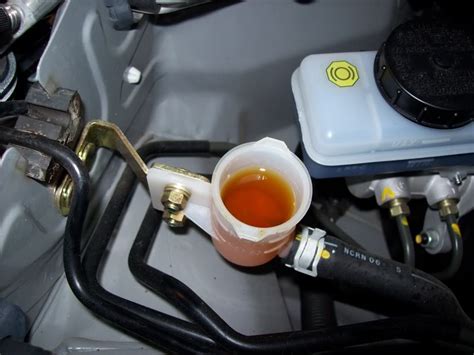How to Bleed a Master Clutch Cylinder Like a Mechanic
Bleeding a master clutch cylinder might sound intimidating, but with the right tools and a methodical approach, it's a manageable DIY task. This guide will walk you through the process, empowering you to tackle this common automotive issue like a seasoned mechanic. We'll cover everything from identifying the problem to ensuring a perfectly bled system.
Why Bleed Your Master Clutch Cylinder?
Air in the clutch hydraulic system is the culprit behind a spongy clutch pedal, making it difficult or impossible to engage the clutch properly. This air can enter the system due to various reasons, including:
- Low Clutch Fluid: Regular maintenance, including checking and topping up clutch fluid, is crucial. Low fluid levels allow air to enter.
- Leaky Components: A leak in the master cylinder, slave cylinder, or clutch line can introduce air into the system.
- Clutch System Repair or Replacement: Any work on the clutch system, including replacing components, almost always necessitates bleeding.
Tools You'll Need:
Before you begin, gather these essential tools:
- Clutch Bleeding Kit: This typically includes a clear hose and a collection container.
- Wrench (appropriate size): To access the bleeder valve.
- New Clutch Fluid: Use the type specified in your vehicle's owner's manual. Never mix different types of brake fluid.
- Jack and Jack Stands (or Ramps): To safely access the underside of your vehicle.
- Gloves: To protect your hands from the corrosive nature of clutch fluid.
- Clean Rags: For spills and cleaning.
- Helper (Optional but Recommended): Having someone pump the clutch pedal makes the process much easier and more efficient.
Step-by-Step Guide to Bleeding a Master Clutch Cylinder
1. Locate the Bleeder Valve:
The bleeder valve is usually located on the master cylinder itself or on a line connected to it. Consult your vehicle's repair manual to pinpoint its exact location. It's typically a small valve with a hexagonal head.
2. Prepare Your Vehicle:
- Safety First: Engage the parking brake firmly and chock the wheels.
- Access: Raise the vehicle securely using a jack and jack stands (or ramps). Refer to your vehicle's owner's manual for safe jacking points.
3. Attach the Bleeding Kit:
- Open the Bleeder Valve: Slightly loosen the bleeder valve using the appropriate wrench.
- Connect the Hose: Attach one end of the clear hose to the bleeder valve and submerge the other end in the collection container filled with clutch fluid. This prevents air from re-entering the system.
4. Bleed the System:
- Pump the Clutch Pedal (With a Helper): Have your helper slowly and firmly pump the clutch pedal several times.
- Open and Close the Bleeder Valve: While the pedal is depressed, briefly open the bleeder valve to allow air and fluid to escape. Close the valve before the helper releases the pedal.
- Observe the Fluid: Watch for air bubbles in the clear hose. Continue pumping and bleeding until only clear fluid emerges, free of air bubbles.
- Repeat the Process: Repeat steps 4 and 5 several times until all air is purged from the system.
5. Top Off the Reservoir:
Once the system is bled, check the clutch fluid reservoir and top it off to the recommended level indicated in your owner's manual.
6. Lower the Vehicle and Test:
Carefully lower the vehicle. Start the engine and test the clutch pedal. It should feel firm and responsive. If the pedal still feels spongy, repeat the bleeding process.
Troubleshooting Common Issues
Q: My clutch pedal still feels spongy after bleeding.
A: This could indicate a more serious problem such as a leak in the system, a faulty master cylinder, or a problem with the slave cylinder. A thorough inspection by a qualified mechanic might be necessary.
Q: I can't locate the bleeder valve.
A: Consult your vehicle's repair manual. The location of the bleeder valve can vary significantly between vehicle makes and models. If you still can't locate it, seek professional assistance.
Q: What type of fluid should I use?
A: Always use the type of clutch fluid specified in your vehicle's owner's manual. Using the wrong fluid can damage your clutch system.
Q: How often should I bleed my clutch system?
A: Routine bleeding isn't typically required unless you're experiencing problems or have worked on the clutch system. However, regular inspection and topping off the fluid reservoir is essential maintenance.
By following these steps, you can effectively bleed your master clutch cylinder, restoring your clutch system to optimal performance. Remember to always prioritize safety and consult your vehicle's repair manual for specific instructions and recommendations. If you are uncomfortable performing this task yourself, seek professional help from a qualified mechanic.

